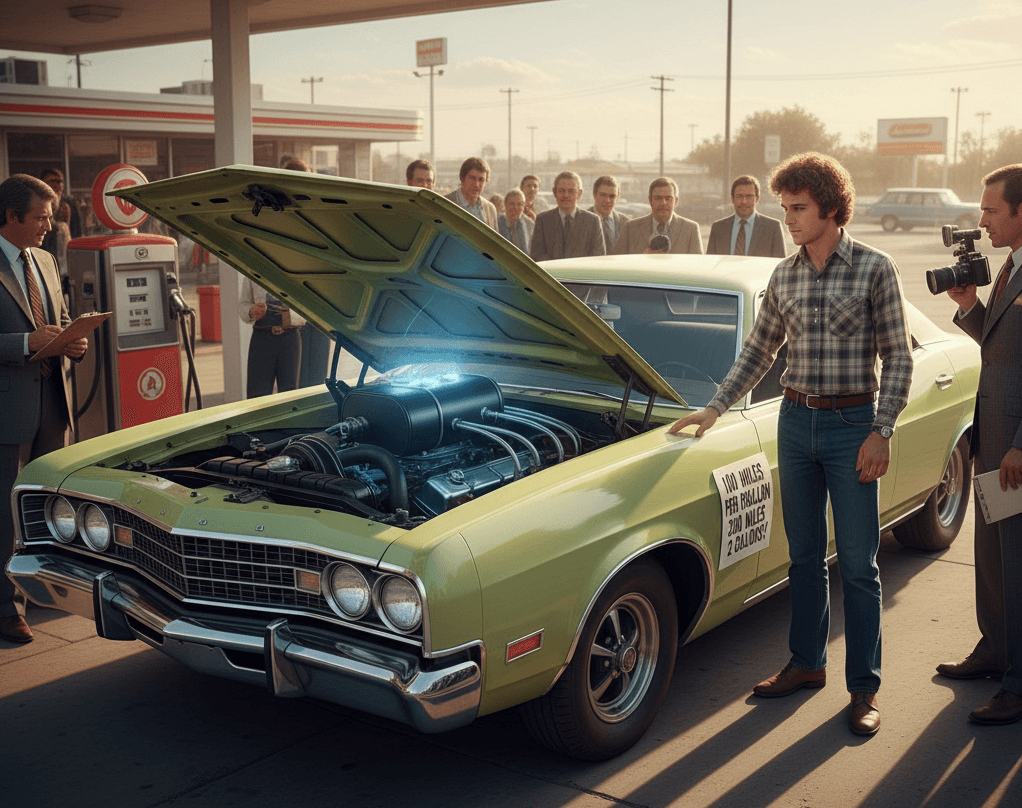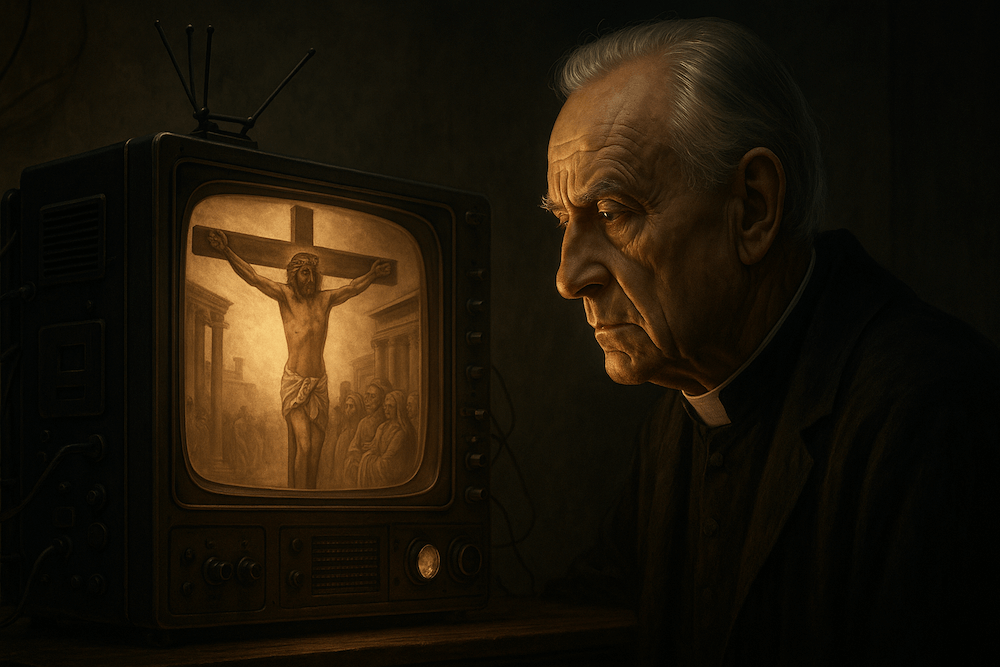Throughout history, smart people have come up with inventions that could have changed the world, but their discoveries were kept secret, stolen, or lost in strange ways. These are the stories of five amazing inventions that never reached their full potential, as well as the sad endings of the people who made them.
1. Starlite: The Amazing Substance That Could Survive Nuclear Fire
Maurice Ward, an amateur chemist and former hairdresser from Hartlepool, England, made what might have been the most important material discovery of the 20th century in the late 1980s. Ward's invention, Starlite, was a plastic compound that could handle temperatures over 10,000°C, which is three times the melting point of diamond and the same as the surface temperature of the sun.

Ward got the idea for his work from the terrible fire at Manchester Airport in 1985, which killed 55 people in just 40 seconds because they breathed in toxic smoke. Ward was determined to make a material that wouldn't catch fire or give off toxic fumes, so he started trying out different recipes in his kitchen, mixing up to 20 different combinations every day.
Tests showed that Starlite was made up of 21 organic polymers and copolymers mixed with ceramics and other things. The material had traits that seemed impossible: it could withstand laser beams that made temperatures rise to 10,000°C, it only took nine seconds to heat a warhead to 900°C, a thin Starlite layer kept temperatures from rising above 40°C, it got stronger as more heat was added, it didn't give off toxic fumes or smoke when exposed to extreme heat, and it could be painted on any surface.
NASA, Boeing, and the British Atomic Weapons Establishment all took notice of Ward's invention. Sir Ronald Mason, who used to be the Ministry of Defence's Chief Scientific Adviser, said, "I was very skeptical when I started this path with Maurice. Now I am completely convinced of the truth of the claims."
Ward, on the other hand, wouldn't share his formula because he was afraid it would be reverse-engineered. He wanted to own 51% of any business, which kept Starlite from getting to the market. Ward died in 2011, taking the secret with him to the grave. However, Thermashield LLC says it got the rights and made the material again in 2013.
2. Tom Ogle's 100-MPG Engine: The Invention That Scared Big Oil
In 1977, a 24-year-old high school dropout from El Paso, Texas, named Tom Ogle showed something that went against what most people thought about how cars should be built. His 1970 Ford Galaxie, which he changed, was a 4,000-pound gas-guzzler that got an amazing 100 miles per gallon, going 200 miles on just two gallons of gas.

Ogle's big break came by chance while he was fixing a lawn mower in 1971. He tried something new after he accidentally punctured the fuel tank: he took off the carburetor and connected a hose directly from the tank to the carburetor intake. The mower ran for an amazing 96 hours on the fuel that was left.
Ogle came up with his vapor fuel system after making this discovery. It got rid of the old carburetor and fuel pump and replaced them with a "black box filter" that injected vaporized gasoline directly into the engine's combustion chambers instead of liquid fuel.
On April 30, 1977, reporters and people who were watching saw Ogle's Galaxie go from El Paso, Texas, to Deming, New Mexico, and back, a distance of 200 miles, on just two gallons of gas. Before and after the test, the car was carefully checked for hidden fuel tanks.
Ogle was under increasing pressure, even though the technology looked good. He is said to have turned down millions of dollars from oil companies and big businesses for his invention because he wanted to make and sell it himself. Ogle's life took a turn for the worse when he was shot and left for dead in April 1981. He started to feel paranoid and told his lawyer that he thought people were putting drugs in his drinks. Ogle, who was 24 years old at the time, died on August 19, 1981, from an overdose of Darvon (a painkiller) and alcohol.
3. The Vatican's Secret Time Machine: Father Ernetti's Chronovisor
Father Pellegrino Ernetti, a well-known Benedictine monk, physicist, and exorcist from Venice, made a shocking claim in the 1960s that shook both the scientific and religious communities. He said he helped make the Chronovisor, a machine that could see things that happened in the past, like the crucifixion of Jesus Christ.

Ernetti was not a normal priest. He had master's degrees in both physics and music, was a well-known expert on Gregorian chants from the past, and was one of Venice's most famous exorcists. He had scientific credentials because he worked at the Cathodic Protection Center in Milan and with some of the best physicists of his time.
Ernetti told French priest Father François Brune (in the 2002 book "Le Nouveau Mystère du Vatican") that the Chronovisor was made in the 1950s by a group of 12 scientists, including Enrico Fermi (a Nobel Prize-winning physicist) and Wernher von Braun (a former Nazi rocket scientist who later helped NASA reach the moon).
Ernetti said that the device had cathode ray tubes and antennas, special metals that could pick up sound and light signals on all wavelengths, and a way to recreate electromagnetic waves and sound frequencies from the past. The idea was that every event leaves behind electromagnetic traces that can be caught and put back together to show how things really happened in the past.
Before he died in 1994, Ernetti is said to have admitted to making up parts of the story, but his supporters say he was forced to do so. Father Brune and journalist Peter Krassa disagreed with this retraction, saying that Ernetti was forced to do it by the Vatican. Later, it was shown that the picture of Christ looked like a postcard from an Italian church, but the main question still stands: Did the Vatican have the technology to see the past?
4. Tesla's Death Ray: The Weapon That Could Stop All Wars
Nikola Tesla is one of the most interesting inventors in history. One of his most mysterious projects was the Teleforce, a particle beam weapon that Tesla said could shoot down 10,000 enemy planes from 300 kilometers away and end all wars.
Tesla told the press about his newest invention on his 78th birthday in 1934. The Teleforce (which journalists called the "death ray," but Tesla didn't like that name) was said to be a defensive weapon that could shoot particles through a vacuum chamber at very high speeds, send "thousands of horsepower" through a beam "thinner than a hair," destroy targets up to 400 kilometers away, and make an impenetrable shield around any country.
Tesla said, "My device sends out particles that can be very big or very small. This lets us send trillions of times more energy to a small area at a great distance than any other kind of ray."
The U.S. government quickly moved to protect Tesla's papers after he died in room 3327 of the New Yorker Hotel on January 7, 1943. But Tesla's nephew Sava Kosanović, who was the ambassador of Yugoslavia to the U.S. and was thought to be a communist sympathizer, had already been in Tesla's room and safe. The FBI thought Kosanović had stolen important papers, but when they opened his locked safe, it was empty.
After World War II, the U.S. military started "Project Nick" under Brigadier General Laurence Cardee Craigie to try out Tesla's ideas for particle beams. Patterson Air Force Base in Dayton, Ohio, got copies of Tesla's papers, but the project was quietly stopped, and all copies of Tesla's death ray papers mysteriously vanished.
5. The Sloot Digital Coding System: A revolutionary way to compress data that disappeared
Jan Sloot, a Dutch television repairman, said in the mid-1990s that he had solved one of the biggest problems in computing: extreme data compression. People say that his Sloot Digital Coding System (SDCS) could fit an entire feature film into just 8 kilobytes. However, modern information theory says that this is mathematically impossible.
Even though the technology seemed impossible, Sloot was able to get a lot of money from investors. Roel Pieper, a former Philips executive, left his job to become CEO of Sloot's company. Marcel Boekhoorn, a Dutch technology investor, gave the company money, and Tom Perkins, an American venture capitalist, wrote about the technology in his 2007 book "Valley Boy." The company was renamed "The Fifth Force, Inc." with plans for a big technology licensing deal.
Jan Sloot died of a heart attack on July 11, 1999, just days before signing a big licensing deal that would have made him very rich. He was 54 years old.
After he died, investigators found some shocking things: the "compression" system actually had a hidden hard disk, the smart cards only had random data on them, not meaningful compression keys, the important "compiler" software that was supposed to make the keys was missing, and all source code and technical documentation had disappeared.
Conclusion: Patterns of Suppression and Loss
These five inventions have some very disturbing things in common: they all had the potential to change whole industries, the inventors died or went missing at key times, their papers were lost or destroyed right after they died, established industries fought against the innovations because they would be hurt by them, and the government or corporations showed interest but then suppressed or classified them.
Humanity may have lost access to technologies that could have saved countless lives (Starlite's fire protection), solved energy crises (Ogle's fuel efficiency), revolutionized historical understanding (Chronovisor), ended warfare (Tesla's defensive weapon), and transformed digital communication (Sloot's compression) due to deliberate suppression, unfortunate timing, or the inventors' own secrecy.
Some of these claims may have been exaggerated or impossible, but the pattern shows that new ideas often have problems that go beyond just technical ones. The stories remind us that progress isn't always guaranteed and that revolutionary discoveries can go away just as quickly as they come.
The question still stands: How many other inventions that could have changed lives have been lost because they were kept secret, hidden, or just bad luck? And what protections should be in place to keep important new ideas safe for the good of all people?
In a world where information can be stored and shared instantly, maybe these kinds of losses will be a thing of the past. Or maybe the next generation of revolutionary inventors will have to deal with new ways of being controlled and suppressed.
